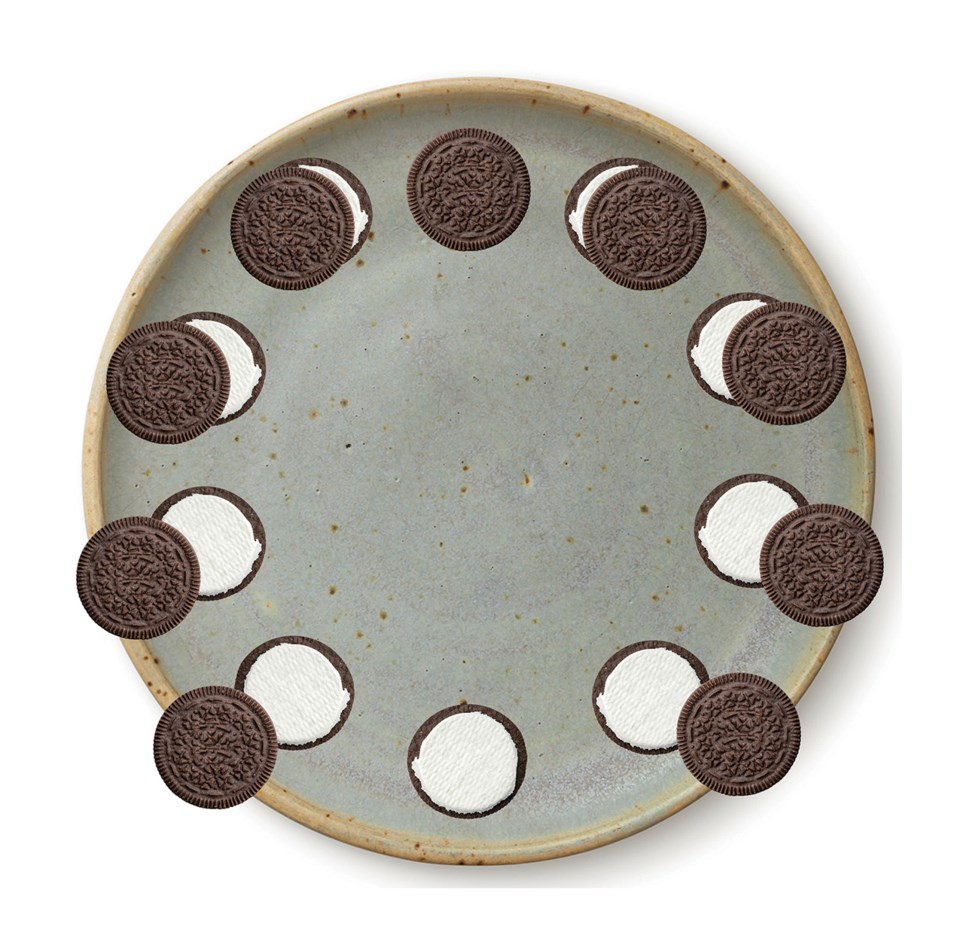April begins with Jupiter disappearing behind the Sun on its way to superior conjunction (directly behind the Sun on its far side) on April 11. Mercury, on the other hand, will be rising higher in the western sky after sunset until its easternmost elongation from the Sun on that same day. After that it swings around in front of the Sun and gets closer but fainter as we see a larger but less illuminated planetary disc before its inferior conjunction with the Sun on May 1. A very thin crescent New Moon will pass below Mercury on April 20 and 21 although it’ll be tough to catch such a thin Moon. Interestingly, this follows an annular/total solar eclipse that is visible from the Indian Ocean, Australia, East Timor and Irian Jaya in Indonesia (but not here) the day before. For a truly tough challenge – if you can find Mercury at around 20:00 on April 20, look for a tiny pale blue-green object about 4 degrees to Mercury’s left. With a good pair of binoculars, it may appear as a tiny disc or just a non-twinkly star; it’s the planet Uranus with a disc about one third that of Mercury and much fainter.
Venus keeps rising in the west after sunset all month, climbing higher as it catches up to us; you can watch the bright stars of Orion set earlier each evening as we go round the Sun, while Venus is moving east faster than the stars move west. Mars starts the month high in the west after sunset and basically just hangs there all month; while the stars behind it move west each day it moves east at about the same rate. It appears to be unmoving about forty degrees above the western horizon. It sits about two degrees below and left of the crescent Moon on the evening of April 25 and will finish up the month just below Pollux and Castor, the two bright stars in Gemini.
There’s not much else truly noteworthy for April so I thought I’d segue into the astronomical revolution that transpired in the sixteenth century. Prior to that time, the predominant models were the Aristotelian spheres or Ptolemaic epicycles models – effectively geocentric systems, in which everything else revolved around the Earth. The first serious criticism of these models seems to have come from Nicolaus Copernicus (1473 – 1543), a Polish doctor, mathematician and astronomer. His eventual publication of De revolutionibus orbium coelestium (English translation: On the Revolutions of the Heavenly Spheres) – according to Wikipedia – put the Sun in the center of the solar system with the planets all revolving around it and the Moon around the Earth.
The fact that it was published in the year of his death may indicate the wisdom of delaying its publication; I don’t know if it was possible to excommunicate one who is dead but it certainly would have made it more difficult for the excommunicator and much less painful for the excommunicatee. At the time, it was pretty much universally held that the celestial sphere of stars was fixed and immutable, although that would later change, and the documentation of the positions of all the major stars was limited, there being no telescopes and only rudimentary observing instruments. To have deduced what Copernicus did with no visual aids and little accurate positional data was pretty impressive. His work would kick off the revolution and be followed by that of Tycho Brahe, Johannes Kepler and Galileo Galilei. In less than 100 years, our knowledge of the solar system and much of the universe would take a big step forward.
In honour of Copernicus’ achievements and in celebration of his insights and tomorrow’s date (and Nabisco), I present the most genius display model of a solar eclipse I’ve ever seen.
The April club meeting open to the public will be at the Sechelt Library at 7 p.m. April 14. Although the presentation is yet to be determined; updates will be posted at the Sunshine Coast Club website at: https://sunshinecoastastronomy.wordpress.com/ We hope to see you there.



